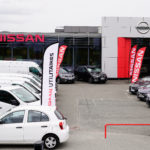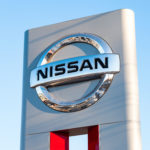Chassis Control is a suite of three specific systems in modern Nissan vehicles that allow their drivers to have more confidence in the vehicle’s traction and handling. These three are Intelligent Ride Control, Intelligent Engine Braking, and Intelligent Trace Control. What are these technologies and how do they improve vehicle comfort and handling? We’ll discuss them in this article.
Before we discuss how Chassis Control works, let’s define what the chassis is and how a vehicle can have good handling and traction. The chassis is the vehicle’s base frame or structure. A vehicle’s handling and traction are largely determined by weight distribution on the wheels when the driver steers or brakes. Suspension systems that distribute the chassis’ weight across four wheels tend to have better traction.
Generally, a stiff suspension provides the greatest amount of traction and handling because it prevents the chassis from tilting while braking or cornering. This is why race cars have stiff suspensions. However, this comes at the cost of comfort. Nissan’s Chassis Control is meant to give drivers confidence in a vehicle’s handling without sacrificing comfort.
How Does Chassis Control Work?
Simply put, Chassis Control makes a vehicle feel more planted by making tiny inputs in the vehicle’s brakes, engine, and transmission. These small adjustments are enough to improve comfort as well as the vehicle’s cornering and braking ability.
The Chassis Control Module takes information such as wheel rotation speed, yaw rate, and g-forces and also takes into account driver inputs like steering, acceleration, and braking. The Chassis Control Module then processes this information and makes tiny adjustments in the vehicle’s brakes, engine, and transmission to improve traction and comfort. The braking and engine adjustments are so miniscule and happen hundreds of times a second so they’re basically imperceptible and seamless.
However, these complicated and intertwined systems require proper calibration. Uncalibrated systems can cause unwanted problems. Additionally, using low-quality parts can be unreliable and dangerous.

How Does Intelligent Ride Control Work?
Nissan’s Intelligent Ride Control compensates for the pitching movement caused by dips, crests, and uneven road conditions by using engine torque and brake inputs to raise and lower the car’s pitch angle. You can understand how Intelligent Ride Control works by observing how a vehicle pitches up when the vehicle accelerates and how it pitches down when brakes are pressed. The car is basically mimicking those movements with its tiny brake and engine adjustments to effectively absorb bumps.
Aside from improving vehicle comfort on straight highways, Intelligent Ride Control can improve handling and cornering by adding or subtracting engine torque and controlling front and rear wheel balance.
How Does Intelligent Engine Brake Work?
Vehicles with Intelligent Engine Brake systems automatically adjust the level of engine braking based on vehicle speed and steering and braking inputs. If a driver is braking, the system will automatically shift to a lower gear to increase the amount of engine braking. As a result, the system makes braking feel easier and less stressful for the driver.
Intelligent Engine Braking can also improve handling around corners similar to Intelligent Ride Control by making tiny engine braking adjustments depending on the driver’s steering and braking inputs.
How Does Intelligent Trace Control Work?
Intelligent Trace Control works by applying tiny braking forces to specific wheels to ensure the vehicle goes along the driver’s steered path . This system also aids in corner stability, eliminates steering lag, maintains vehicle stability during quick lane changes, and reduces understeer while cornering by applying braking pressure to the inner wheels.
Overall, the system’s ability to make driving easier, safer, and more confidence-inspiring for the driver makes it a welcome feature. The system can allow the driver to execute emergency maneuvers better and have more traction in low-grip situations. Even with these features, though, drivers should still drive safely and obey traffic laws at all times.
Any information provided on this Website is for informational purposes only and is not intended to replace consultation with a professional mechanic. The accuracy and timeliness of the information may change from the time of publication.






























